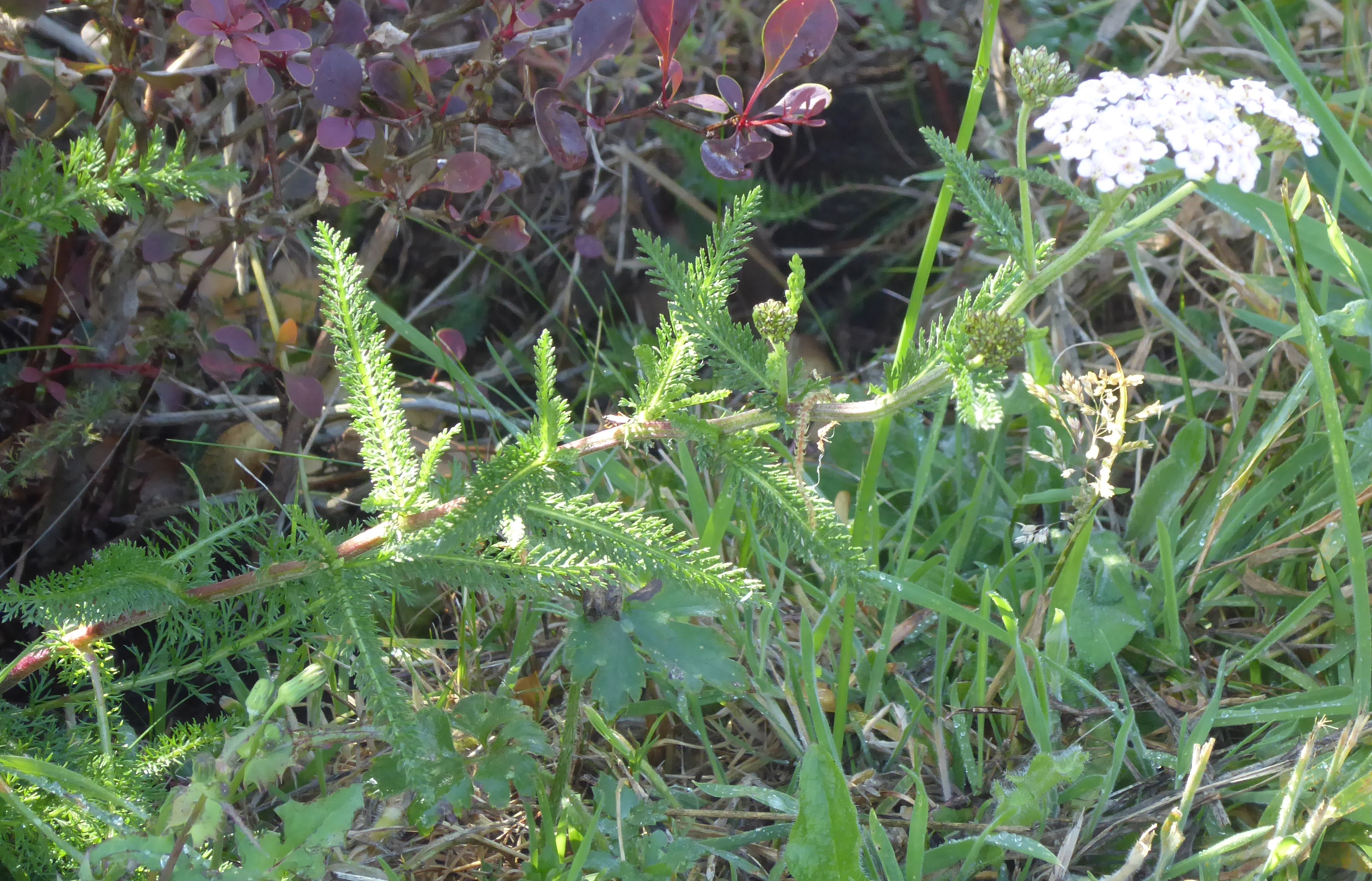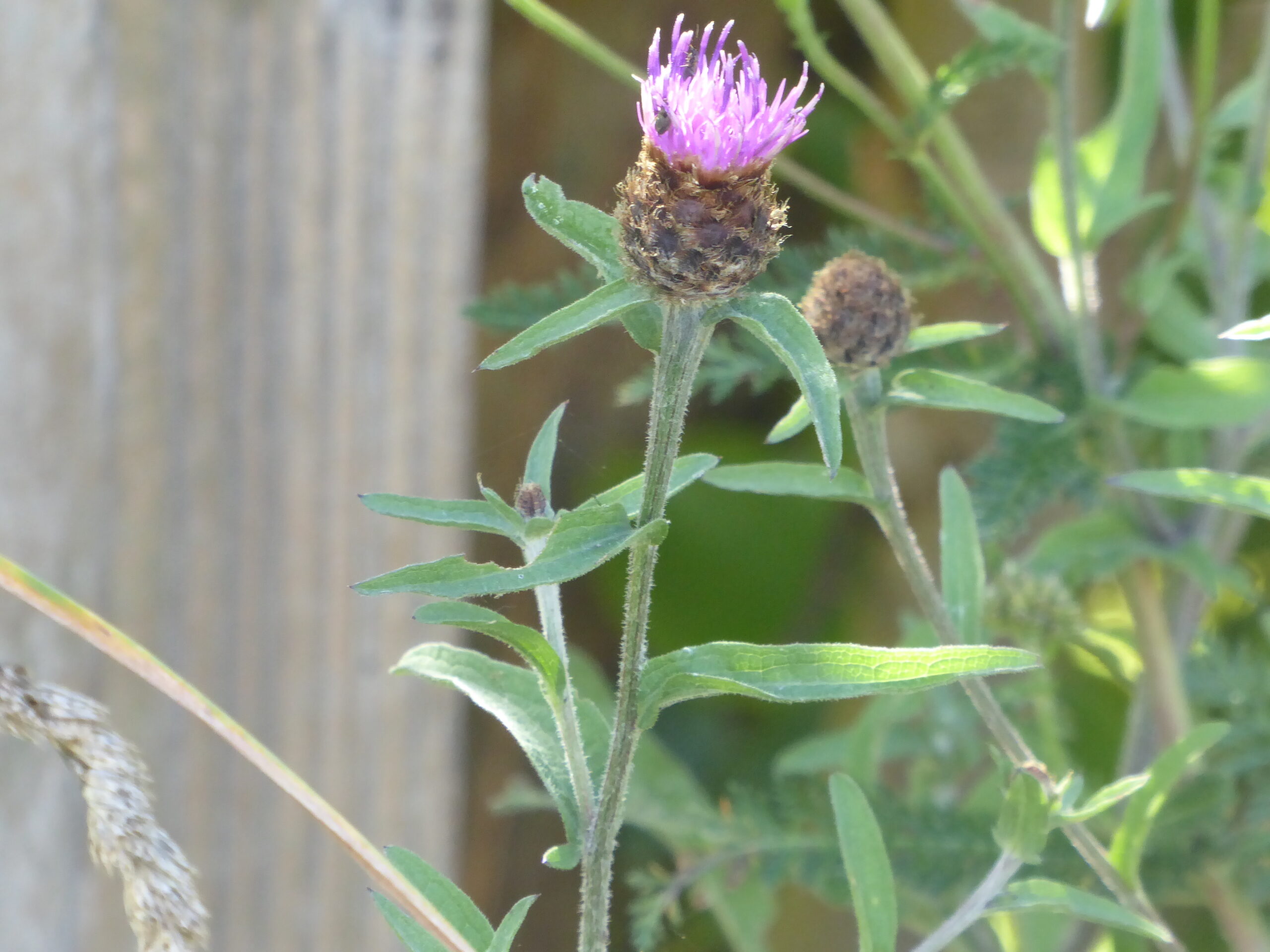When is a thistle not a thistle? When it’s a Common Knapweed! Common Knapweed is found on grasslands, including roadside verges and clifftops, and is loved by butterflies. The flowers are actually flower-clusters at the top of the stems and the leaves are smooth and hairy, rather than prickly like thistles. It’s actually not in the thistle family, but in the same family as Cornflowers and if you imagine it blue, then you virtually have a cornflower! Common knapweed is also known as Black Knapweed. Knapweed is named after its shape as ‘knap’ means button, knob, or tuft in Middle English.
I’m including the ramp that we have built down to the watermeadow, because we are pretty much letting it go wild, apart from mowing a single track down for the wheelbarrow and lawnmower (we sometimes mow the watermeadow pathways for ease of access). We have a small bit of dry-stone wall that edges the ramp and stops it collapsing on the steps that we have cut into the bank. This has been known to house lizards, so I’m still hoping to catch one of them on my camera (fingers crossed!). Because the ramp is built of garden waste and turf, it tends to sink on a regular basis as the ‘foundations’ decompose, and we top it up with more turf and soil. The habitat on the ramp and the right-hand bank of the watermeadow becomes dryer as it rises up towards the garden, so this is where we find more meadow plants. The left-hand bank is in the shade, so still a bit damp and home to ferns and fungi.

On the ramp, I noticed a feathery plant with cow-parsley-style white flower heads. Yarrow comes in yellow or pale pink as well as white. It can be found in grasslands and disturbed soil, both of which apply here. It has many medicinal uses – Yarrow tea can be made into a poultice for wound healing and inflammation or drunk to aid digestion or mental health. In fact, Yarrow’s Latin name Achillea is named after Achilles, who used it to treat his soldiers’ wounds and millefolium means ‘a thousand leaves’ referring to their feathery appearance.
